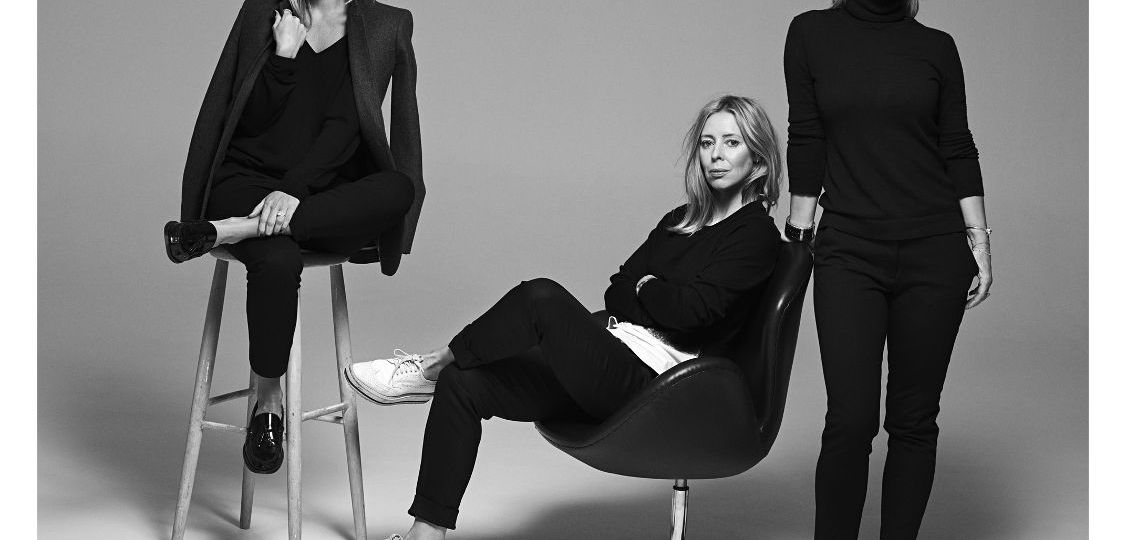
She revolutionised sustainable fashion with House of Dagmar. Now she’s turning ocean waste into objects of desire — and redefining luxury for the 21st century.
There’s a certain kind of courage required to walk away from your own triumph. Kristina Tjäder, 53, possesses it in abundance.
For two decades, she was the creative force behind House of Dagmar, the Stockholm fashion house she co-founded with her sisters, Karin Söderlind and Sofia Wallenstam, in 2005. Together, they built a brand synonymous with Scandinavian elegance and genuine sustainability — the kind that measures its footprint and publishes uncomfortable truths, not the greenwashing variety that’s become de rigueur in fashion. They introduced chrome-free leather to protect both ecosystems and factory workers. They pioneered animal-friendly fur techniques. They made sustainability desirable rather than dutiful.
And then Kristina left.
Not in scandal or dispute — the sisters remain close, and the brand continues to thrive — but because, as so often happens to women in their fifties, questions that had whispered for years became shouts. For Kristina, the question was deceptively simple:
“What can we create that is beautiful from what already exists?”
She had been asking it throughout her time at Dagmar too. The sisters often discovered that, despite believing a particular fabric was both beautiful and natural, it wasn’t necessarily sustainable. Sometimes they were shocked by the processes required to achieve the natural feel they so loved, and so began a search for less damaging alternatives. In this respect, the trio were pioneers.
Despite her lifelong love of fashion, in the end, it was the call of furniture that captured Kristina’s imagination. She found herself as likely to be thinking about the leg or back of a chair as about the drape of fabric on a mannequin. So, to the surprise of many, she started over.
From Needle to Notion
The origin story begins, as so many great design stories do, with a grandmother. Dagmar — the namesake of the fashion house — was a tailor who radiated confidence and style. She taught young Kristina to sew, and together they crafted miniature wardrobes for dolls. By the time Kristina could handle scissors properly, Dagmar was encouraging her to learn pattern making too.
It wasn’t long before Kristina realised the power that sewing gave her. She began creating her own designs, wearing combinations that set her apart from her peers. She recalls making blazers and dresses from heavy upholstery fabrics — relishing the sensation of wearing something she had made herself rather than pulling it from a shop rail.
“I just wanted to create something,” she remembers. “And I loved sketching out what I wanted to sew.”
Her mother encouraged her to study in Paris — specifically at ESMOD, the prestigious École Supérieure des Arts et Techniques de la Mode. Between 1993 and 1996, Kristina studied tailoring and fashion design there. Those years shaped everything that followed. Like every student, she learned to drape mannequins and cut toile, and after graduating, she apprenticed at some of Paris’s most exclusive fashion houses, absorbing the traditions of haute couture in the process.
That Parisian period never left her. She describes it as formative — a place that both tested and defined her.
“Paris can truly consume you — you love and hate it at the same time,” she says. “But in that moment, a little Frenchwoman moved into me, and she never really left.”
That Frenchwoman eventually returned to Stockholm. At the turn of the millennium, the city’s fashion scene was electric. Acne Studios had just launched, catalysing a new wave of Swedish creativity. Kristina and her sisters, all working in different corners of the industry, sensed an opportunity. They started with knitwear — Kristina’s obsession with materials and yarn fairs providing the spark. And so, House of Dagmar was born.
Fashion with a Conscience
What set them apart wasn’t just Scandinavian minimalism or impeccable tailoring, though they offered both. It was their commitment to sustainability before sustainability became a selling point.
From 2017, they began measuring their ecological footprint and publishing the results annually — even when the data made them look bad. They discovered that natural fibres aren’t always environmentally friendly to produce. They kept learning, adapting, and pushing forward.
Under Kristina’s creative direction, House of Dagmar became known for innovation:
Animal-friendly fur, created by sewing mohair onto cotton, just as wigs are made.
Chrome-free leather, produced in closed-loop systems to keep carcinogenic chemicals away from workers and waterways.
Down jackets crafted from recycled plastic bottles.
Their “Good Choice” label, launched in 2019, helped customers identify genuinely sustainable pieces. By 2020, 90% of their collection carried that designation.
But Kristina’s gaze had shifted. She was thinking beyond fashion, beyond the body — towards the spaces we inhabit.
From Catwalk to Craftsmanship
A few years ago, she made her move, stepping down as Head Designer to launch what would become Hyfer Objects, alongside co-founders Sara Stendebakken (whose background is in hospitality) and Axel Andersson (an engineer).
Together, they form a formidable team. Hyfer — originally called Ekbacken Studios — represents a fusion of Kristina’s fashion sensibility with cutting-edge production methods. Using 3D printing and innovative materials such as Sulapac (a bio-based, eco-safe compound), they craft furniture from discarded fishing nets and surplus forestry materials — waste that would otherwise be burned. It’s the same circular philosophy she brought to fashion, amplified.
“All our furniture is circular — it had a previous life, and it can have a new one after,” Kristina explains. “We want to challenge the traditional way of thinking about luxury.”
The challenge is working. Vogue Scandinavia has dubbed them creators of “interior treasures” made from waste. Their clients include Restaurant Persona, the Grand Joanne Hotel, and Vogue Scandinavia’s own headquarters. Each piece is made to order, with short lead times. Buy-back guarantees ensure true circularity, and impact receipts show customers exactly what their purchase means for the planet.
Kristina’s design approach remains rooted in her Paris training.
“I always think in silhouettes,” she says. “I see it as having one foot in fashion and the other in design. My process is influenced by my education — we draped constantly on mannequins in Paris using toile. It was hands-on, letting the material guide the outcome.”
A New Definition of Luxury
At 53, Kristina is embracing what she calls “the next part of the journey.” Her home outside Stockholm reflects this philosophy — a mix of influences and materials, beautifully balanced.
Fashion was her first act: a 20-year run that reshaped how an industry thinks about sustainability. Now, with Hyfer, she’s poised to do the same for furniture design.
The grandmother who taught her to sew would surely be proud. Dagmar lived in an era when things lasted — when people valued quality over quantity, and garments served multiple generations. Kristina has taken those Depression-era lessons and married them to 21st-century technology.
The result challenges everything we’ve been taught about luxury, about newness, about desire itself.
After all, the best luxury isn’t what’s rare — it’s what lasts.

